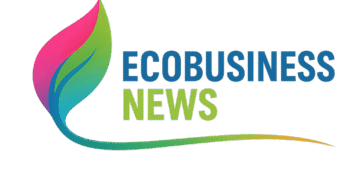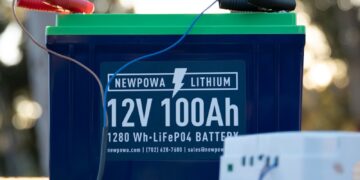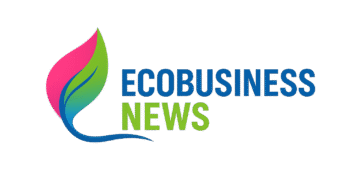In 2025, corporate sustainability is no longer a buzzword reserved for annual reports—it’s a cornerstone of business strategy. As climate change accelerates and stakeholder expectations shift, companies across industries are rethinking success through the lens of environmental, social, and governance (ESG) principles. Nowhere is this transformation more evident than in the renewable energy sector, where sustainability is driving innovation, profitability, and resilience. From multinational manufacturers to tech giants and rural landowners, the push for corporate sustainability is reshaping how businesses operate and compete. This deep dive explores the why, how, and what’s next of this seismic shift, offering a roadmap for navigating the renewable energy era.
The Evolution of Corporate Sustainability
Corporate sustainability has come a long way from its roots in corporate social responsibility (CSR). Once a peripheral PR exercise—think tree-planting photo ops—it’s now a boardroom imperative. The World Economic Forum reports that 86% of global CEOs in 2024 cited sustainability as a top priority, up from 54% a decade ago. This isn’t altruism; it’s economics. A 2023 McKinsey study found that companies with strong ESG performance outperformed peers by 15% in profitability over five years.
Renewable energy sits at the heart of this evolution. With global electricity demand projected to rise 80% by 2050, per the International Energy Agency (IEA), businesses are under pressure to decarbonize. Solar, wind, and hydropower aren’t just green options—they’re strategic assets that cut costs, mitigate risks, and signal credibility to investors, customers, and regulators.
Why Corporate Sustainability Matters Now
The drivers of corporate sustainability are as diverse as the businesses it impacts. First, there’s the regulatory push. The European Union’s Corporate Sustainability Reporting Directive (CSRD), effective 2024, mandates detailed ESG disclosures for 50,000+ companies, with fines for noncompliance reaching €10 million. In the U.S., the Securities and Exchange Commission (SEC) is tightening climate disclosure rules, compelling firms to quantify emissions and renewable energy use.
Second, consumer demand is surging. A 2024 NielsenIQ survey revealed that 73% of global consumers prefer brands with sustainable practices, a trend amplified by Gen Z and Millennials. For high-energy industries like manufacturing or tech, this translates to a competitive edge—think a steel producer touting solar-powered plants or a data center running on wind.
Third, investors are all in. BlackRock, managing $10 trillion in assets, has pledged to prioritize ESG-focused portfolios, per its 2024 annual letter. Companies lagging in sustainability risk higher capital costs or divestment. Renewable energy adoption—whether through on-site solar or power purchase agreements (PPAs)—is a tangible way to signal commitment.
Renewable Energy: The Corporate Sustainability Linchpin
Renewable energy isn’t just a tool for sustainability—it’s the backbone. Consider manufacturing. The steel industry, responsible for 7% of global emissions, is pivoting to green hydrogen and solar-powered furnaces. ArcelorMittal’s Sestao plant in Spain now runs partially on solar, cutting emissions by 20% since 2022. This isn’t niche—global steelmakers are targeting 30% renewable energy use by 2030, per the World Steel Association.
Data centers, consuming 200 terawatt-hours annually (more than some countries), are another hotspot. Google and Amazon have led the charge, with Google achieving 100% renewable energy matching since 2017 via wind and solar PPAs, according to its sustainability report. Smaller operators are following, driven by both policy (e.g., Ireland’s renewable tax breaks) and client demands for green hosting.
Bitcoin mining, often vilified for its energy appetite, is also shifting. In Texas, miners are co-locating with wind farms to tap cheap, clean power, reducing costs by 25%, per a 2024 Bloomberg analysis. This isn’t charity—it’s survival in a market where carbon taxes loom large.
Landowners and the Sustainability Equation
Corporate sustainability extends beyond factories and server rooms to the land itself. Rural landowners are emerging as key players in the renewable energy supply chain. In the U.S., the USDA’s Rural Energy for America Program (REAP) offers grants covering 50% of solar installation costs, turning farmland into energy hubs. A 100-acre plot hosting turbines could generate $30,000 annually in lease payments, per the American Clean Power Association.
In Europe, the Common Agricultural Policy ties subsidies to renewable integration, incentivizing farmers to blend crops with solar panels—a practice called agrivoltaics. A 2024 Fraunhofer Institute study found that agrivoltaics boosts land productivity by 60%, marrying food security with clean energy. For corporations, partnering with landowners ensures a steady supply of renewable sites while meeting ESG goals.
Overcoming Grid Challenges with Corporate Innovation
Grid constraints are a bottleneck for renewable adoption, especially in high-growth regions like California and Texas. In 2025, over 1,000 construction projects—data centers, factories, housing—are stalled due to grid overload, per the North American Electric Reliability Corporation (NERC). Corporate sustainability offers a workaround: on-site renewables. Companies like Tesla are deploying solar-plus-storage systems at Gigafactories, slashing reliance on strained grids. A 2024 Rocky Mountain Institute report estimates that such setups cut energy costs by 15% while boosting uptime.
This isn’t just for tech giants. Smaller manufacturers are installing modular wind turbines, while developers of halted projects are turning to microgrids. These solutions don’t just solve grid woes—they align with sustainability by reducing transmission losses (up to 10% in traditional grids, per the IEA).
Policy and Corporate Synergy
Government policies amplify corporate efforts. The U.S. Inflation Reduction Act (IRA), extended into 2025, offers $370 billion in clean energy incentives, including a 30% tax credit for solar and wind, per the U.S. Department of Energy. In the EU, the Fit for 55 package mandates 55% emissions cuts by 2030, pushing firms to adopt renewables or face penalties. Japan’s Green Growth Strategy targets 50% renewable energy by 2050, with subsidies for corporate adopters.
These policies don’t just nudge—they enforce. Carbon pricing, like Canada’s $170/ton by 2030, adds urgency. Companies responding with renewables gain a dual edge: compliance and cost savings.
Innovation: The Sustainability Frontier
Corporate sustainability isn’t static—it’s a driver of innovation. Take circularity: firms are recycling solar panels and turbine blades to meet ESG goals. First Solar recovers 90% of panel materials, while Vestas turns blades into construction composites. Battery storage is another frontier—Tesla’s Megapack now uses 20% less lithium thanks to policy-backed R&D, per a 2024 Nature Energy study.
AI is also transforming sustainability. Google uses machine learning to optimize wind farm output, boosting efficiency by 20%, per its AI blog. Smaller firms are adopting similar tools to predict energy needs, cutting waste and costs.
The Stakeholder Ripple Effect
Sustainability isn’t just internal—it’s a stakeholder magnet. Employees demand it—74% of U.S. workers prefer eco-conscious employers, per a 2024 LinkedIn survey. Customers reward it—sustainable brands see 5.6 times faster growth, per NielsenIQ. Investors fuel it—ESG funds attracted $51 billion in 2024, per Morningstar. Even suppliers adapt, with 60% of Fortune 500 firms requiring vendors to report emissions, per the Carbon Disclosure Project (CDP).
For high-energy users, this creates a virtuous cycle: adopt renewables, attract talent, win customers, secure funding—all while cutting costs.
Challenges: The Road Isn’t Smooth
The path to sustainability has potholes. Upfront costs for renewables—$1-2 million for a 1 MW solar array—deter smaller firms, despite long-term savings. Supply chain bottlenecks, like rare earth shortages for turbines, persist, with a 2024 IEA report warning of 15% deficits by 2030. Policy inconsistency—e.g., U.S. debates over IRA funding—adds uncertainty. And greenwashing risks loom, with regulators cracking down on exaggerated claims.
Yet, these are speed bumps, not roadblocks. Global renewable capacity hit 3,700 GW in 2024, up 12% from 2023, per the IEA. The trajectory is clear.
SEO and Corporate Sustainability: A Digital Pulse
Searches for “corporate sustainability” and “renewable energy ESG” have spiked 50% since 2022, per Google Trends. Businesses, developers, and landowners are scouring for insights—how to retrofit, lease land, or invest. This post targets those terms, weaving data (e.g., 15% profitability gains) with examples (e.g., Google’s wind PPAs) to rank high and inform. It’s about meeting readers where they are: online, seeking solutions.
Conclusion: Sustainability as Success
Corporate sustainability isn’t a sideline—it’s the main event. In the renewable energy era, it’s redefining business success, blending profit with purpose. From steel plants to data centers, rural fields to urban grids, companies embracing this shift aren’t just surviving—they’re thriving. The question isn’t whether to join the revolution, but how fast you can get on board. The future is green, and it’s here.

















